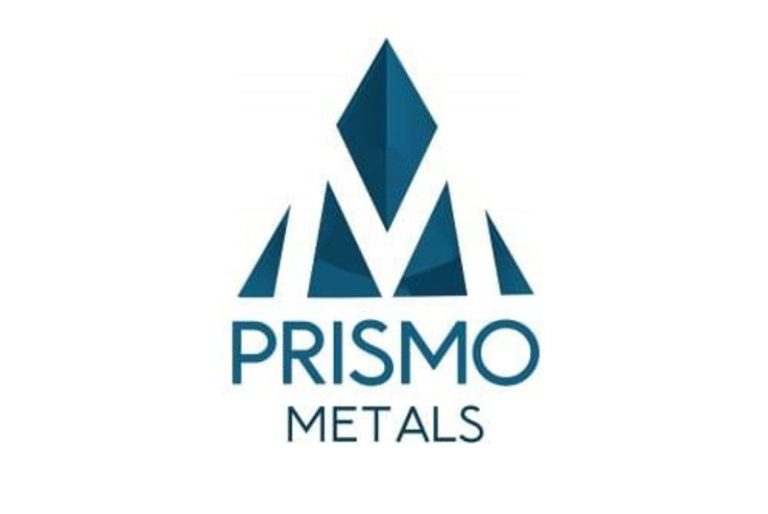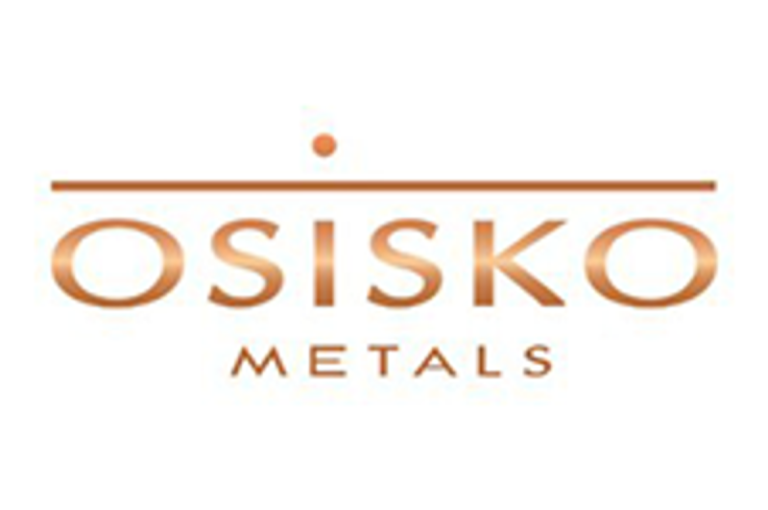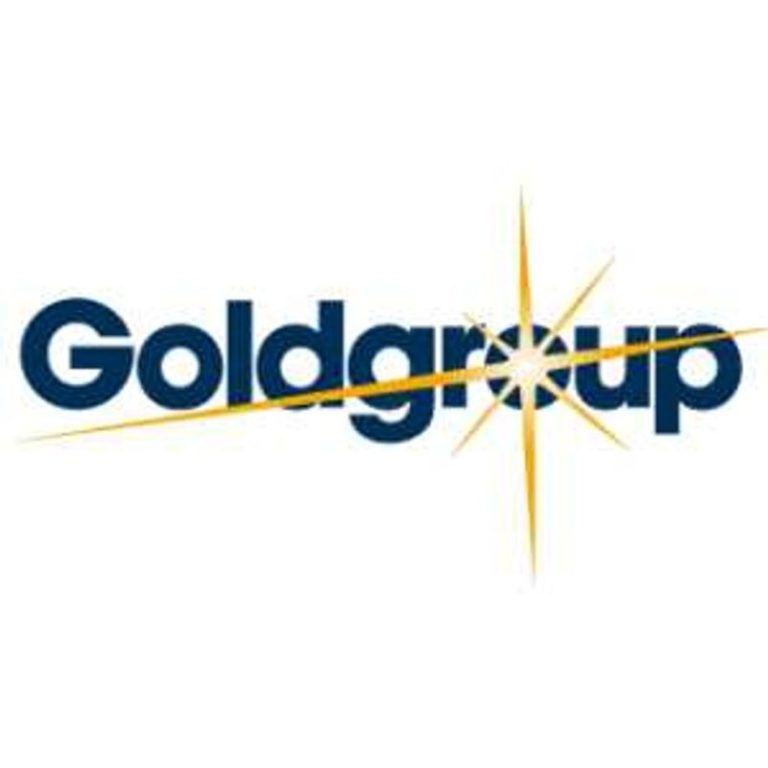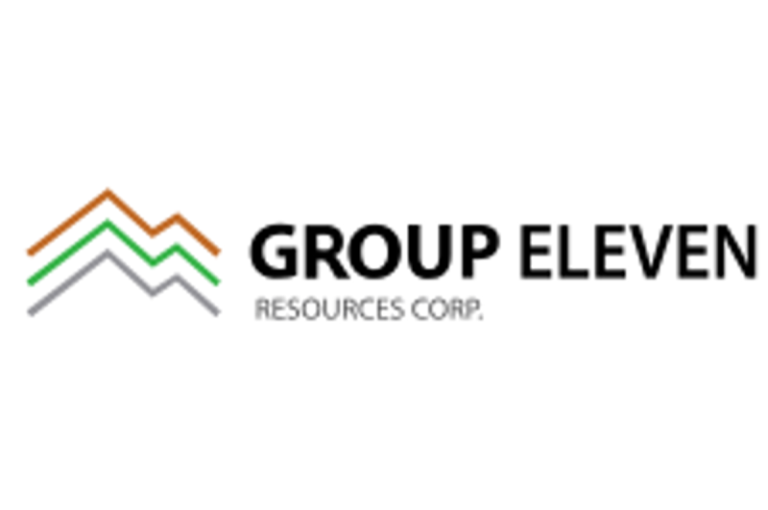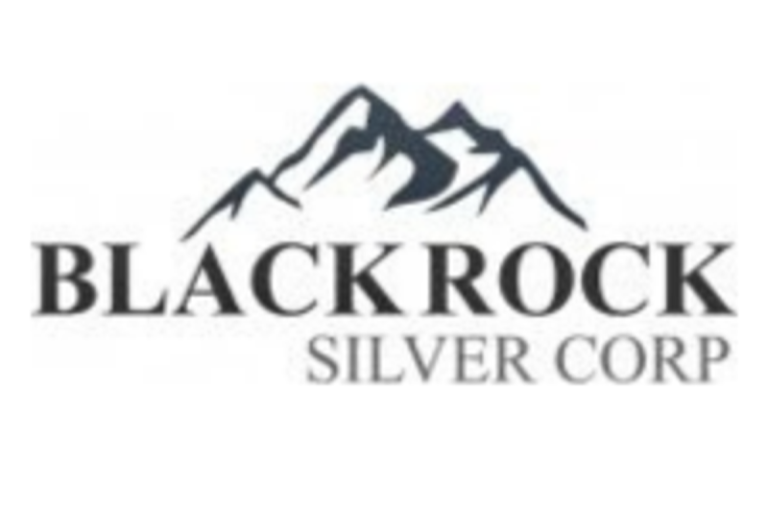(TheNewswire)
Additional Financing Closes
NOT FOR DISTRIBUTION TO UNITED STATES NEWS WIRE SERVICES OR FOR DISSEMINATION IN THE UNITED STATES
Vancouver, British Columbia TheNewswire – December 3rd, 2025 Prismo Metals Inc. (‘ Prismo ‘ or the ‘ Company ‘) (CSE: PRIZ,OTC:PMOMF) (OTCQB: PMOMF) is pleased to announce it has received assay results for samples recently taken at the Silver King Project from two exploration targets located on the east side of the property, namely the Black Diamond replacement target and the newly named Crown porphyry intrusion target (Fig. 1).
Figure 1 . Map showing the location of the Black Diamond replacement and Crown porphyry intrusion exploration targets at the Silver King project. Claim boundaries are shown in yellow.
The assays show high grade copper mineralization present at Black Diamond (Fig 1). The rock chip samples yielded generally high copper assays with several samples analyzing in excess of 1 % Cu and two samples in excess of 5 % Cu (Table 1, Fig. 2). Gold is generally anomalous for the Black Diamond samples.
Rock chip samples from the Crown porphyry intrusion generally exhibited lead and zinc values with elevated silver and low copper and gold (Table 2). Importantly, however, two samples of vein material from the stockwork target yielded high gold values of 4 and 5 g/t (Fig. 2). The mineralization in the stockwork veining at Crown provides impetus to complete additional exploration in the area.
Table 1. Assay results for samples from the Black Diamond replacement target.
|
Sample |
Location |
Easting |
Northing |
Width m |
Au g/t |
Ag g/t |
Cu % |
Pb % |
Zn % |
|
544572 |
Black Diamond |
492601 |
3687624 |
1.5 |
0.007 |
0.30 |
0.18 |
0.009 |
0.02 |
|
544573 |
Black Diamond |
492601 |
3687625 |
1.5 |
0.052 |
0.34 |
0.29 |
0.013 |
0.03 |
|
544574 |
Black Diamond |
492603 |
3687623 |
1.5 |
0.008 |
0.47 |
0.12 |
0.009 |
0.02 |
|
544575 |
Historic adit 3 |
492642 |
3687624 |
0.5 |
1.08 |
0.15 |
5.56 |
0.013 |
0.03 |
|
544576 |
Historic adit 3 |
492641 |
3687625 |
0.5 |
0.045 |
1.08 |
0.44 |
0.022 |
0.02 |
|
544577 |
Historic adit 3 |
492643 |
3687621 |
1.0 |
0.012 |
0.76 |
0.07 |
0.014 |
0.02 |
|
544578 |
Historic adit 1 |
492670 |
3687639 |
0.8 |
0.285 |
12.43 |
6.02 |
– |
0.01 |
|
544581 |
Historic adit 1 |
492672 |
3687640 |
1.1 |
0.125 |
10.5 |
1.14 |
0.011 |
0.02 |
|
544582 |
Historic adit 1 |
492667 |
3687640 |
1.4 |
0.285 |
6.66 |
2.63 |
0.006 |
0.02 |
|
544583 |
Black Diamond |
492678 |
3687626 |
0.5 |
0.034 |
2.18 |
0.15 |
0.009 |
0.02 |
|
544584 |
Historic adit 2 |
492670 |
3687625 |
0.5 |
0.35 |
7.99 |
1.24 |
0.006 |
0.01 |
|
544585 |
Historic adit 2 |
492679 |
3687628 |
0.5 |
0.125 |
8.87 |
0.45 |
0.013 |
0.02 |
|
544586 |
Historic adit 2 |
492672 |
3687638 |
1.0 |
0.053 |
8.97 |
1.42 |
0.013 |
0.02 |
Table 2 . Assay results for samples from the Crown porphyry intrusive target.
|
Sample |
Location |
Easting |
Northing |
Width m |
Au g/t |
Ag g/t |
Cu % |
Pb % |
Zn % |
|
544566 |
Crown |
492633 |
3687859 |
1.5 |
0.008 |
3.7 |
0.005 |
0.03 |
0.04 |
|
544567 |
Crown |
492805 |
3687910 |
1.3 |
0.011 |
1.3 |
0.006 |
– |
0.01 |
|
544568 |
Crown |
492803 |
3687910 |
2.0 |
0.006 |
1.28 |
0.008 |
0.03 |
0.03 |
|
544569 |
Crown |
492836 |
3687898 |
1.0 |
0.012 |
0.25 |
0.008 |
– |
– |
|
544570 |
Crown |
492499 |
3687669 |
1.0 |
0.011 |
2.31 |
0.035 |
0.07 |
0.09 |
|
544571 |
Crown |
492534 |
3687657 |
0.5 |
0.016 |
2.65 |
0.002 |
0.09 |
0.03 |
|
544588 |
Crown |
492737 |
3687901 |
2.5 |
0.015 |
2.76 |
0.005 |
0.01 |
0.01 |
|
544589 |
Crown |
492746 |
3687884 |
1.0 |
0.022 |
4.21 |
0.010 |
0.03 |
0.02 |
|
544590 |
Crown |
492763 |
3687867 |
0.5 |
0.07 |
11.26 |
0.013 |
0.05 |
0.11 |
|
544591 |
Crown |
492799 |
3687851 |
1.0 |
5.19 |
46.44 |
0.048 |
0.21 |
0.06 |
|
544592 |
Crown |
492793 |
3687823 |
1.0 |
4.06 |
13.97 |
0.021 |
0.10 |
0.07 |
|
544593 |
Crown |
492701 |
3687858 |
1.5 |
0.027 |
1.0 |
0.011 |
0.03 |
0.04 |
Click Image To View Full Size
Figure 2. Copper assays and high gold values for samples mentioned from the Black Diamond
and Crown areas at Silver King.
IP Survey Update
The Company also has received the report for initial phase of its IP survey at Silver King. The IP survey consisted of a gradient array to test for resistivity and chargeability anomalies at a depth of about 300m below the surface.
The IP survey shows low resistivity lows associated with the Black Diamond replacement body as well as the stratigraphically controlled Cu bearing replacements that extend toward the nearby Magma mine (Fig. 3). A second nearly east-west trending resistivity low occurs in the central portion of the claim block and coincides with a hypothesized structure that may control the Black Diamond body and also may be important in the formation of the Silver King deposit. This type of structure is similar to the Magma vein, the main mineralized structure at the high-grade Magma mine, and is a prime exploration target.
The IP survey also shows several chargeability anomalies that are presumably associated with disseminated sulfides, largely pyrite (Fig. 4). The stockwork intrusion mentioned previously is associated with one of these chargeability anomalies and provides a second important exploration target with characteristics similar to mineralization at high structural levels in porphyry systems. A second similar chargeability anomaly occurs nearby to the southwest in an area overlain by a mostly barren quartz diorite intrusive and may represent a similar blind porphyry target.
Based on the results of the initial IP survey, a follow-up pole-dipole survey to further define the anomalies from shallow to deeper levels along section lines is planned to be conducted in December.
Figure 3. IP resistivity map showing exploration targets: yellow line-Silver King glory hole,
magenta line-polymetallic vein, green line-copper vein, red outlines-Black Diamond replacement
body and stratigraphically controlled replacement horizons, black outline-stockwork intrusion.
Figure 4. IP chargeability map showing exploration targets: yellow line-Silver King glory hole,
magenta line-polymetallic vein, green line-copper vein, red outlines-Black Diamond replacement
body and stratigraphically controlled replacement horizons, black outline-stockwork intrusion.
Drilling Update
Alain Lambert, CEO of Prismo commented: ‘The results announced today confirm the vast exploration potential at Silver King. While we look forward to drilling these new targets in the future, our plans remain unchanged. Our immediate priority is to undertake our fully funded drill program, as previously announced. This drill campaign will focus primarily on the historic Silver King mine site and will be for a minimum of about 1,000 meters. The objective is to test the upper half of the steeply dipping pipelike Silver King mineralized body as well as potential mineralization adjacent to the dense stockwork that was the focus of historic mining.’
Mr. Lambert added: ‘We are pleased with the steady progress on the permitting front. The collaboration of Forest Service officials demonstrates a clear commitment to supporting mining activities in Arizona.’
Prismo recently announced that the Forest Service, the federal surface land management entity for Silver King, had determined that the Company’s proposed drill plan meets the regulatory requirements for processing, and that such plan is complete, as described in the regulations at 36 CFR 228.4(c).
The Forest Service will now proceed with the environmental analysis pursuant to 36 CFR 228(a)(5) in conformity with the National Environmental Policy Act (NEPA). This analysis will proceed as a Categorical Exclusion, the lowest level of environment reviews applicable to projects that are not expected to have a significant effect on the environment, such as Silver King.
Financing Update
Prismo also announced that further to its news releases dated October 20, 2025 and November 13, 2025, the Company has proceeded with an upsized second closing of its previously announced non-brokered private placement of units of the Company (‘ Units ‘) at an issue price of $0.10 per Unit (the ‘ Private Placement ‘). The second closing of the Private Placement was increased from 1,250,000 Units to the issuance of 1,650,000 Units for gross proceeds of $165,000 (the ‘ Second Tranche ‘). The Company previously announced a first closing of the Private Placement on November 12, 2025 for aggregate gross proceeds of $1,745,000. Due to strong investor demand, the Company has now raised aggregate gross proceeds of $1,910,000.
Each Unit consists of one common share in the capital of the Company (a ‘ Share ‘) and one common share purchase warrant of the Company (a ‘ Warrant ‘). Each Warrant entitles the holder to purchase one Share for a period of thirty-six (36) months from the date of issue at an exercise price of $0.175.
The Company intends to use the net proceeds of the Private Placement primarily for drilling at its Silver King project and for general corporate purposes. The Company expects to accept additional subscriptions of units in the coming days for an approximate amount of $125,000.
The Units issued pursuant to the Second Tranche are subject to a four-month hold period from the closing date of the Second Tranche under applicable Canadian securities laws, in addition to such other restrictions as may apply under applicable securities laws of jurisdictions outside Canada.
In connection with the Second Tranche, the Company issued an aggregate of 68,000 finder’s warrants (the ‘Finder’s Warrants’ ) and paid finder’s commissions of $6,800 to a certain qualified finder. Each Finder’s Warrant is exercisable for a period of twenty-four (24) months from the date of issuance to purchase one Share at a price of $0.10. In addition, the Company paid a cash fee of $2,000 to a financial advisor.
The securities being issued in connection with the Second Tranche have not been and will not be registered under the U.S. Securities Act and may not be offered or sold in the United States, or to, or for the account or benefit of, U.S. persons or persons in the United States, absent registration or an applicable exemption from the registration requirements. This press release shall not constitute an offer to sell or the solicitation of an offer to buy nor shall there be any sale of the securities in any State in which such offer, solicitation or sale would be unlawful.
QA/QC
Samples were analyzed by SGS, an internationally recognized analytical lab, with preparation at the Tempe, Arizona facility and analyses at the Burnaby laboratory. Prismo inserts controls samples consisting of a standard pulps and a coarse blanks in the sample stream, and the lab also inserts control samples.
Qualified Person
Dr. Craig Gibson, PhD., CPG., a Qualified Person as defined by NI-43-01 regulations and Chief Exploration Officer and a director of the Company, has reviewed and approved the technical disclosures in this news release.
About Prismo Metals Inc.
Prismo (CSE: PRIZ,OTC:PMOMF) is a mining exploration company focused on advancing its Silver King, Ripsey and Hot Breccia projects in Arizona and its Palos Verdes silver project in Mexico.
Please follow @PrismoMetals on Twitter , Facebook , LinkedIn , Instagram , and YouTube
Prismo Metals Inc.
1100 – 1111 Melville St., Vancouver, British Columbia V6E 3V6 Phone: (416) 361-0737
Contact:
Alain Lambert, Chief Executive Officer alain.lambert@prismometals.com
Gordon Aldcorn, President gordon.aldcorn@prismometals.com
Neither the Canadian Securities Exchange nor its Market Regulator (as that term is defined in the policies of the Canadian Securities Exchange) accepts responsibility for the adequacy or accuracy of this release.
Cautionary Note Regarding Forward-Looking Information
This release includes certain statements and information that may constitute forward-looking information within the meaning of applicable Canadian securities laws. Forward-looking statements relate to future events or future performance and reflect the expectations or beliefs of management of the Company regarding future events. Generally, forward-looking statements and information can be identified by the use of forward-looking terminology such as ‘ intends’ or ‘ anticipates’, or variations of such words and phrases or statements that certain actions, events or results ‘ may’, ‘ could’, ‘ should’, ‘ would’ or ‘ occur’. This information and these statements, referred to herein as ‘forward-looking statements’, are not historical facts, are made as of the date of this news release and include without limitation, statements regarding discussions of future plans, estimates and forecasts and statements as to management’s expectations and intentions with respect to, among other things: the timing, costs and results of drilling at Silver King; and the intended use of any proceeds raised under the Second Tranche.
These forward-looking statements involve numerous risks and uncertainties, and actual results might differ materially from results suggested in any forward-looking statements. These risks and uncertainties include, among other things: the potential inability of the Company to utilize the anticipated proceeds of the Private Placement as anticipated; and those risks set out in the Company’s public disclosure record on SEDAR+ ( www.sedarplus.com ) under the Company’s issuer profile .
In making the forward-looking statements in this news release, the Company has applied several material assumptions, including without limitation, that the Company will use the proceeds of the Second Tranche as currently anticipated and on the timeline currently expected.
Although management of the Company has attempted to identify important factors that could cause actual results to differ materially from those contained in forward-looking statements or forward- looking information, there may be other factors that cause results not to be as anticipated, estimated or intended. There can be no assurance that such statements will prove to be accurate, as actual results and future events could differ materially from those anticipated in such statements. Accordingly, readers should not place undue reliance on forward-looking statements and forward- looking information. Readers are cautioned that reliance on such information may not be appropriate for other purposes. The Company does not undertake to update any forward-looking statement, forward-looking information or financial outlook that are incorporated by reference herein, except in accordance with applicable securities laws. We seek safe harbor.
Copyright (c) 2025 TheNewswire – All rights reserved.
News Provided by TheNewsWire via QuoteMedia

